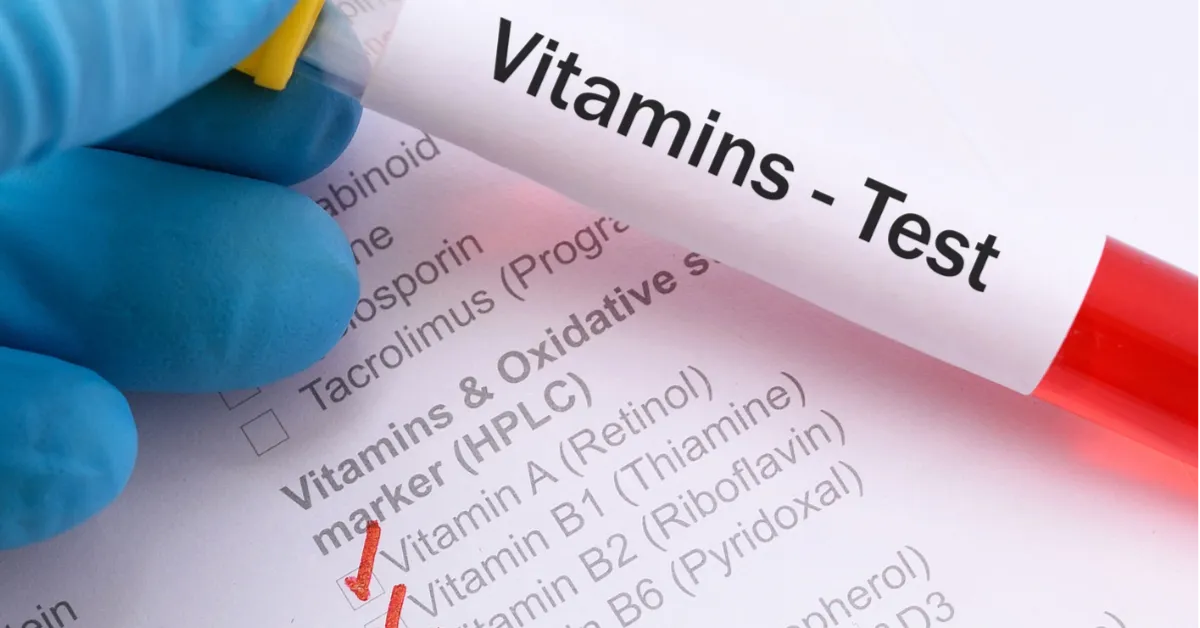ISO 18787 Riboflavin (Vitamin B2) Quantification in Food
The quantification of riboflavin (vitamin B2) is a critical component within the food and feed testing sector, ensuring compliance with international standards and safeguarding public health. ISO 18787 provides a robust framework for this process, allowing laboratories to measure riboflavin content in various food products accurately.
The importance of this test cannot be overstated, especially given the essential role that vitamin B2 plays in human nutrition and its potential impact on health. Riboflavin is involved in numerous biochemical processes within the body, including energy production and red blood cell formation. Therefore, ensuring accurate quantification helps prevent deficiencies or excessive intake, which can lead to serious health issues.
The methodology outlined by ISO 18787 involves several key steps that must be followed precisely to achieve reliable results. These include sample preparation, extraction techniques, analytical instrumentation, and calibration procedures. Each step is crucial for minimizing errors and ensuring the integrity of the final result.
- Sample Collection: Proper collection methods are vital to avoid contamination or loss of riboflavin from the sample.
- Extraction: Efficient extraction ensures that all riboflavin present in the sample is captured without interference from other compounds.
- Analytical Techniques: High-performance liquid chromatography (HPLC) with fluorescence detection is commonly used for its precision and sensitivity.
- Data Analysis: Careful calibration of equipment and thorough data analysis are necessary to interpret results accurately.
The use of international standards like ISO 18787 ensures uniformity across laboratories globally, making comparisons more straightforward. This standardization is particularly beneficial for quality managers who need consistent outcomes from different testing facilities.
Compliance officers will find this service invaluable when ensuring adherence to regulatory requirements set by bodies such as the European Commission and Food and Drug Administration (FDA). R&D engineers can leverage these tests to optimize formulations and identify potential issues early in product development. For procurement teams, accurate quantification helps in sourcing high-quality raw materials that meet specified vitamin B2 levels.
The robust protocols of ISO 18787 also extend beyond mere compliance; they contribute significantly to public health by identifying foods with insufficient or excessive riboflavin content. This information is crucial for formulating dietary guidelines and addressing nutritional imbalances in populations.
In summary, the quantification of riboflavin in food products using ISO 18787 is more than just a technical procedure; it embodies best practices in analytical science that enhance public health outcomes and regulatory compliance. By adhering to these stringent standards, laboratories can deliver reliable results that benefit both consumers and industry stakeholders.
Applied Standards
The ISO 18787 standard is widely recognized for its comprehensive approach to quantifying riboflavin in various food products. It aligns closely with other international standards such as EN 369, which covers the determination of vitamin B2 content in fortified foods.
The application of these standards ensures that laboratories adhere to stringent quality control measures and provide accurate results consistently. Compliance with ISO 18787 is particularly important for manufacturers producing enriched or fortified products where riboflavin levels are regulated by authorities worldwide.
| Standard | Description | Relevance |
|---|---|---|
| ISO 18787:2019 | Determination of riboflavin in foods by high-performance liquid chromatography with fluorescence detection | Main standard for quantification |
| EN 369 | Determination of vitamin B2 content in fortified foods | Supplementary to ISO 18787 for specific products |
The interplay between these standards ensures that laboratories remain at the forefront of analytical science, providing accurate and reliable results.
Scope and Methodology
| Scope | Description |
|---|---|
| Determination of riboflavin content in food products | This includes fortified cereals, dairy products, beverages, and other processed foods. |
| Sample preparation | Involves thorough cleaning, extraction using appropriate solvents, and filtration to ensure purity. |
| Analytical instrumentation | High-performance liquid chromatography (HPLC) with fluorescence detection is the primary technique used. |
| Data analysis | Involves meticulous calibration of HPLC and comprehensive data interpretation to obtain precise results. |
The methodology described in ISO 18787 ensures that laboratories can perform this test accurately and consistently. Proper sample preparation is critical, as it affects the extraction efficiency and ultimately the accuracy of the quantification process.
Analytical instrumentation plays a pivotal role in achieving precise results. HPLC with fluorescence detection offers unparalleled sensitivity and selectivity for riboflavin analysis. Calibration procedures are essential to ensure that instruments perform within specified tolerances, further enhancing reliability.
Data analysis requires rigorous quality control measures, including replicate analyses to confirm consistency. The final step involves reporting the quantification results according to ISO 18787 guidelines, ensuring transparency and comparability across different laboratories.
Use Cases and Application Examples
- Fortified food production: Ensuring consistent riboflavin levels in fortified cereals and other products.
- Dairy product quality control: Monitoring the addition of riboflavin to dairy-based beverages and spreads.
- Beverage formulation: Determining optimal riboflavin content for energy drinks and other functional beverages.
| Use Case | Description | Benefits |
|---|---|---|
| Fortified food production | Ensures accurate riboflavin addition to meet regulatory requirements and nutritional guidelines. | Promotes public health by preventing deficiencies and ensuring adequate intake. |
| Dairy product quality control | Maintains consistent riboflavin levels in processed dairy products, enhancing consumer trust. | Improves product quality and supports compliance with international standards. |
| Beverage formulation | Optimizes riboflavin content to meet specific health claims while maintaining product stability. | Aids in product differentiation and enhances brand reputation. |
The application of ISO 18787 in these scenarios demonstrates its versatility and importance across different sectors of the food industry. By adhering to this standard, laboratories can provide reliable data that benefits manufacturers and ultimately contributes to public health.





